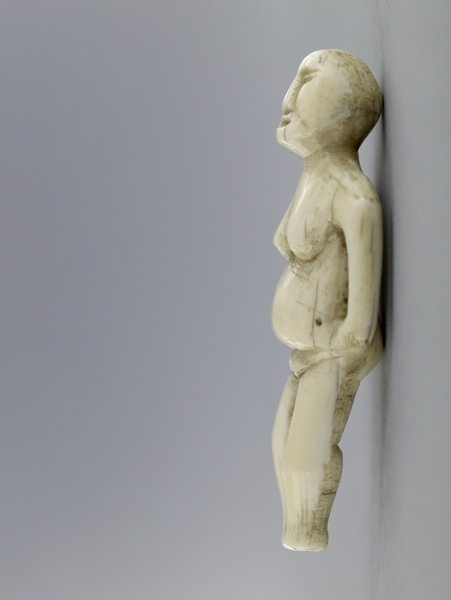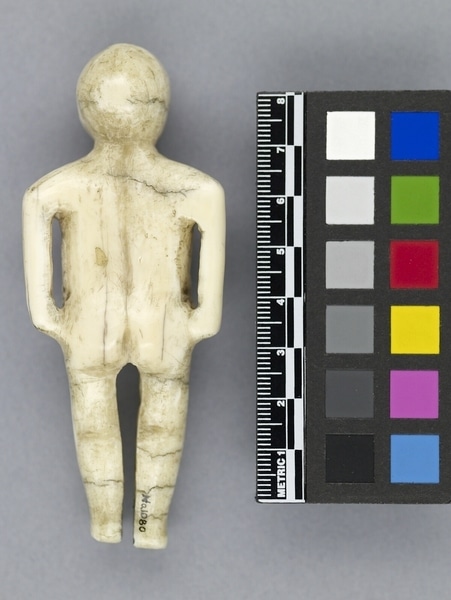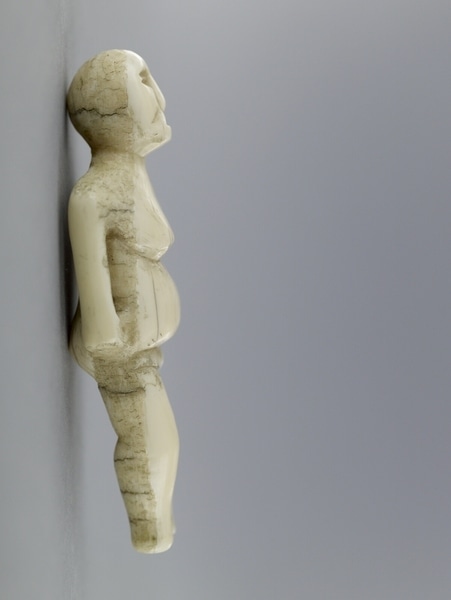Figure Item Number: Na1080 from the MOA: University of British Columbia




Description
Female form with arms slightly out from sides ending at hips. Round head with wide nose and forehead in higher relief than cheek area. Eyes, eyebrows, and mouth are indicated by horizontal lines. Diagonal lines curve under cheek from nose; breasts and stomach protrude. Footless legs are flat along inside edges and calves and knees protrude slightly. Crease along backbone and buttocks.
History Of Use
Likely from the central Canadian Arctic, or Greenland. Traditional ivory dolls are carved by fathers as toys for their daughters. Skin and other clothing is usually removable and interchangeable. Small ivory figures are also used as fertility images by childless couples to help induce pregnancy. Figures may also stand in for individuals at important festivals.
Cultural Context
ceremonial; fertility; toy
Item History
- Made in Nunavut, Canada ?
- Owned by Marianne Koerner and Walter C. Koerner before January 8, 1981
- Received from Marianne Koerner (Donor) and Walter C. Koerner (Donor) on January 8, 1981
What
- Name
- Figure
- Identification Number
- Na1080
- Type of Item
- figure
- Material
- walrus tusk
- Manufacturing Technique
- carved and incised
- Overall
- height 10.6 cm, width 4.5 cm, depth 2.3 cm
Who
- Culture
- Inuit
- Previous Owner
- Marianne Koerner and Walter C. Koerner
- Received from
- Marianne Koerner (Donor) and Walter C. Koerner (Donor)
Where
- Holding Institution
- MOA: University of British Columbia
- Made in
- Nunavut, Canada ?
When
- Ownership Date
- before January 8, 1981
- Acquisition Date
- on January 8, 1981
Other
- Item Classes
- carvings & sculpture
- Condition
- good
- Current Location
- Case 48
- Accession Number
- 0697/0001